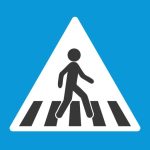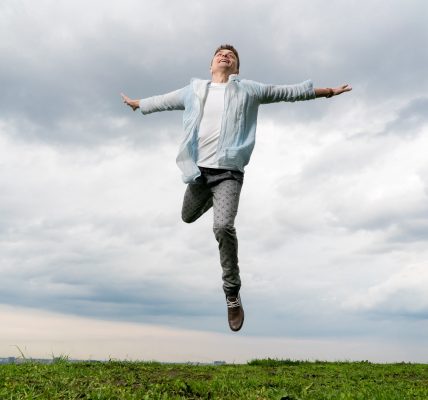Toward a Universal Treatment for Addiction

What would a universal treatment for addiction look like? That is our task today: to sketch a treatment program for addiction that works with both behavioral disorders and substance use disorders. This attempt is informed by two major documents we have been looking at recently on AddictionNews:
- A New Approach to Addiction and Choice: Akrasia and the Nature of Free Will, by Dr. Reinout W. Wiers, professor of developmental psychopathology at the University of Amsterdam. Dr. Wiers argues against the chronic brain disease model of addiction.
- A Unified Theory of Addiction, by Dr. Robert Pretlow, childhood obesity expert, president of eHealth International and publisher of AddictionNews. Dr. Pretlow is the designer of the BrainWeighve weight loss app.
Dr. Wiers studies mostly people who are addicted, trying to tease out the causes for their inability to refrain from self-destructive behavior (akrasia). What he finds is a combination of genetic predisposition and either a thrill-seeking personality (low impulse control) or an anxious/depressed personality that indulges in compulsive behavior to relieve pain. However, using behavior repeatedly for thrill-seeking or to ease the pain can lead to damaging the brain’s reward systems. That damage can be repaired to some degree through addiction treatment.
Dr. Pretlow’s focus is prior to addiction, on the factors that cause people to engage in damaging compulsive behavior. He finds the origin of addiction in the response to stress. Stress is the result of a conflict between two competing goals. When it can’t be resolved, it is displaced. In animals, it results in pacing, excessive grooming, and compulsive behavior. In humans, stress is displaced with exercise, yoga, eating, playing games, listening to music, taking mind-altering substances, and many other activities, some healthy, some not.
Both doctors see the need to break a dangerous addiction through the use of medication, and both also see that relapse soon follows if there’s not something more than medication. What does that “more” look like? Is there a universal treatment for addiction that can be personalized and achieve positive results across the board, from behavioral disorders to substance use disorders? What does that look like?
Here are some of the elements of the universal treatment for addiction:
- Cue Avoidance
- Stress Management
- Just-In-Time Support
- Depth of Support
- Self-Directed
- Social Element
- Compensation
- Gamification
Addiction takes time and the patterns of behavior are deeply rooted by the time someone enters treatment. Cues are shown to be irresistible to eating addicts, in the research of Dr. Pretlow, and alcoholics, in the research of Dr. Wiers. Avoiding the locations, smells, times of day, or other signals associated with the behavior is critical to recovery. Dr. Wiers has a unique method of training resistance to cues by repeatedly “pushing away” images associated with the behavior. When added to the standard therapy for alcohol use disorder, it has repeatedly been shown to reduce relapse rates by 8% to 13% one year after treatment ends.
Stress management is often taught to children in school and should be a regular part of every curriculum, preschool through college. Recess, playtime, sports, games — these are all forms of stress management, but they can be optimized to reward impulse control, as Dr. Wiers illustrates with “good behavior games” that have measurable, lifelong results. Much more can be done. Children would benefit from learning yoga postures, practicing deep breathing, creative visualization, mindfulness, and other methods of self-calming that not only help with addiction recovery but become lifelong tools.
Dr. Pretlow’s BrainWeighve app for weight loss, currently recruiting for a clinical trial at UCLA, helps users to rechannel the urge to eat using a variety of pre-arranged activities. These can be as simple as isometrics, breath holding, counting to 10, or other restraints that the user chooses in advance. More elaborate cue avoidance involves leaving the room, changing routes to school or work, drinking a glass of water, or dozens of other activities suggested by the app or input by users.
A key element of a universal addiction treatment is that it is self-directed. Dr. Wiers cites research that tells adolescents not to smoke causes them to increase smoking. However, showing adolescents that cigarette companies are manipulating them for profit decreases their smoking. Dr. Wiers uses the technique of motivational interviewing to get patients to reveal their personal goals for treatment and their plans to get there. Perhaps no technique is as effective as the film script intervention, where patients are asked to storyboard a movie of their life.
Dr. Pretlow’s BrainWeighve app includes candid video profiles of people who have successfully lost weight using the app. The ability of the user to narrate their own videos or animations should help them develop the episodic future thinking that recovering addicts use to give themselves something to look forward to.
Levels of support are needed to backstop universal addiction treatment. In-the-moment support is enhanced when it can be delivered by smartphone, something most teens and adults have nearby or that can be provided as part of treatment. The patient should be able to access a prearranged list of tips for dealing with urges, prearranged contacts in case of emergency, and other emergency services as needed, including a request for medication. Some addiction recovery apps provide 24-hour access to a live, trained therapist.
Another level of support is the trained therapist. Dr. Wiers has shown that his cue sensitivity training does not work when it’s delivered standalone over the internet. It only works in the context of a treatment program where the patient has made a commitment to recovery and has received the standard medication and basic therapy. Dr. Pretlow’s BrainWeighve app facilitates real-time data sharing with the patient’s medical support team. Without support in the setup and operation of addiction recovery apps, the proven health benefits disappear.
Addiction recovery works much better when it becomes a team effort. The community reinforcement approach to addiction recovery stresses mapping the patient’s support network and dealing with environmental factors such as education, employment, healthcare, and housing that might otherwise tank recovery. Social pressure is a big part of the stress that leads people into addiction and it can be harnessed to lead them out, as well. Even addicted rats, given the choice of cocaine or playing with their friends, are capable of choosing friends over the drug.
Almost all recovery apps provide a community of users who support each other. Dr. Pretlow’s BrainWeighve allows users to share suggested solutions for cue avoidance with the group, to participate in group therapy sessions through the app, and to get support from — and give support to — other users. Dr. Wiers found increased alcohol avoidance when cue sensitivity training was done in groups, and cites a smoking cessation study where adding group therapy increased the successful quit rate to 41% after one year.
Of course, the heavy lifting in that smoking cessation study was done by contingency management. Compensating people for non-use is the most effective way of keeping them in recovery. Nothing gets employees to quit smoking like paying them to quit smoking. Alcoholics Anonymous has prized coins for achieving ever-longer lengths of abstinence. Tangible, consistent rewards, even if minor, stimulate compliance.
Finally, one more element to add to this universal addiction recovery program. Can it be fun? Can you turn recovery into a game? A challenging game? One with contests and conquests, rewards and disappointments, teams and fans? Can you make it a game where persons or teams are compensated with points, merchandise and prizes when they contribute solutions or assistance that other persons or teams find valuable?
It sounds like the universal addiction recovery program involves flipping the tables and using the mechanics of addiction to beat addiction. If you can make recovery self-directed, social and fun, the patient becomes addicted to recovery. And that’s a much healthier, happier affliction to deal with.
Written by Steve O’Keefe. First published September 23, 2024.
Sources:
A New Approach to Addiction and Choice: Akrasia and the Nature of Free Will, by Reinout W. Wiers, to be published by Routledge in 2025.
“A Unified Theory of Addiction, Preprint 5” by Dr. Robert Pretlow, March 2023.
“Retraining automatic action-tendencies to approach alcohol in hazardous drinkers,” Addiction, February 2010.
Image Copyright: pitinan.




